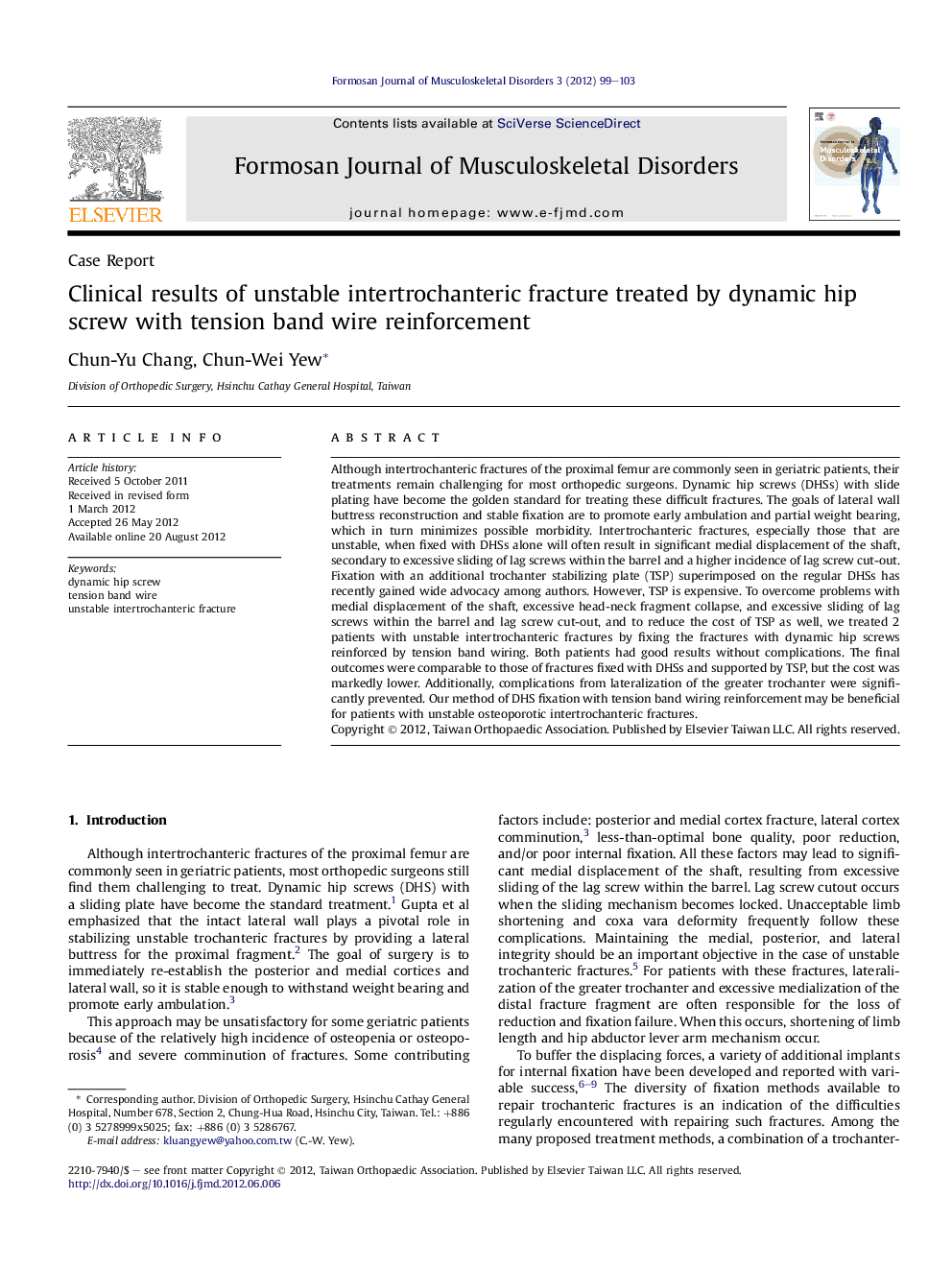| Article ID | Journal | Published Year | Pages | File Type |
|---|---|---|---|---|
| 4055420 | Formosan Journal of Musculoskeletal Disorders | 2012 | 5 Pages |
Abstract
Although intertrochanteric fractures of the proximal femur are commonly seen in geriatric patients, their treatments remain challenging for most orthopedic surgeons. Dynamic hip screws (DHSs) with slide plating have become the golden standard for treating these difficult fractures. The goals of lateral wall buttress reconstruction and stable fixation are to promote early ambulation and partial weight bearing, which in turn minimizes possible morbidity. Intertrochanteric fractures, especially those that are unstable, when fixed with DHSs alone will often result in significant medial displacement of the shaft, secondary to excessive sliding of lag screws within the barrel and a higher incidence of lag screw cut-out. Fixation with an additional trochanter stabilizing plate (TSP) superimposed on the regular DHSs has recently gained wide advocacy among authors. However, TSP is expensive. To overcome problems with medial displacement of the shaft, excessive head-neck fragment collapse, and excessive sliding of lag screws within the barrel and lag screw cut-out, and to reduce the cost of TSP as well, we treated 2 patients with unstable intertrochanteric fractures by fixing the fractures with dynamic hip screws reinforced by tension band wiring. Both patients had good results without complications. The final outcomes were comparable to those of fractures fixed with DHSs and supported by TSP, but the cost was markedly lower. Additionally, complications from lateralization of the greater trochanter were significantly prevented. Our method of DHS fixation with tension band wiring reinforcement may be beneficial for patients with unstable osteoporotic intertrochanteric fractures.
Related Topics
Health Sciences
Medicine and Dentistry
Orthopedics, Sports Medicine and Rehabilitation
Authors
Chun-Yu Chang, Chun-Wei Yew,
